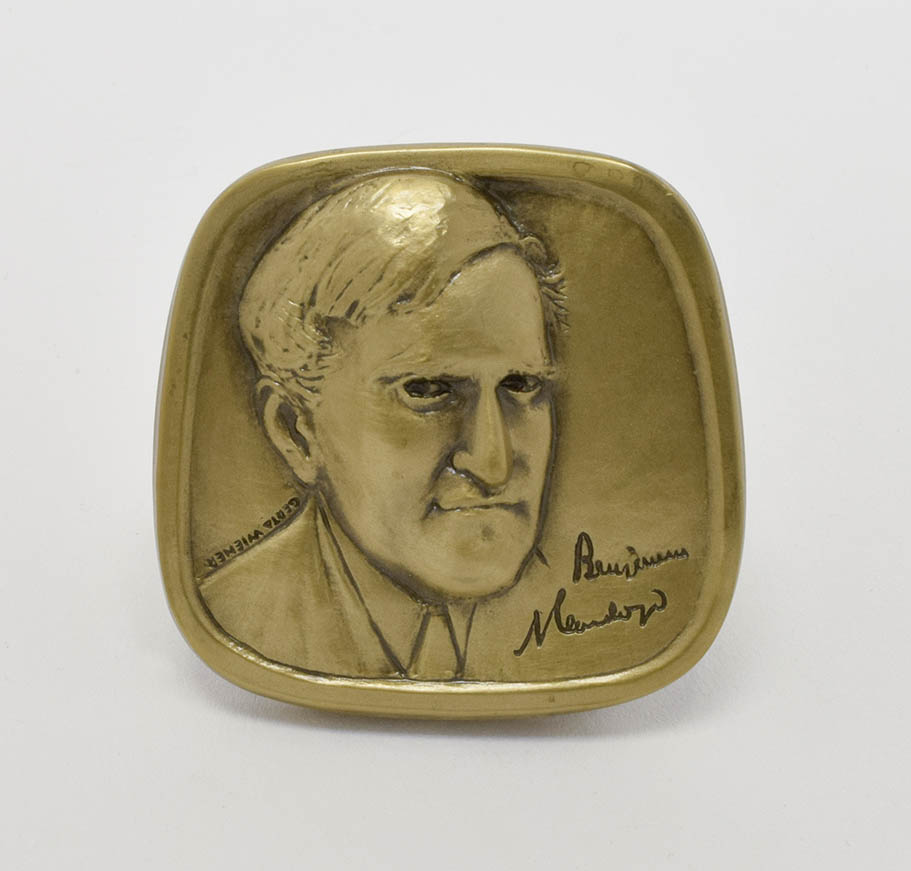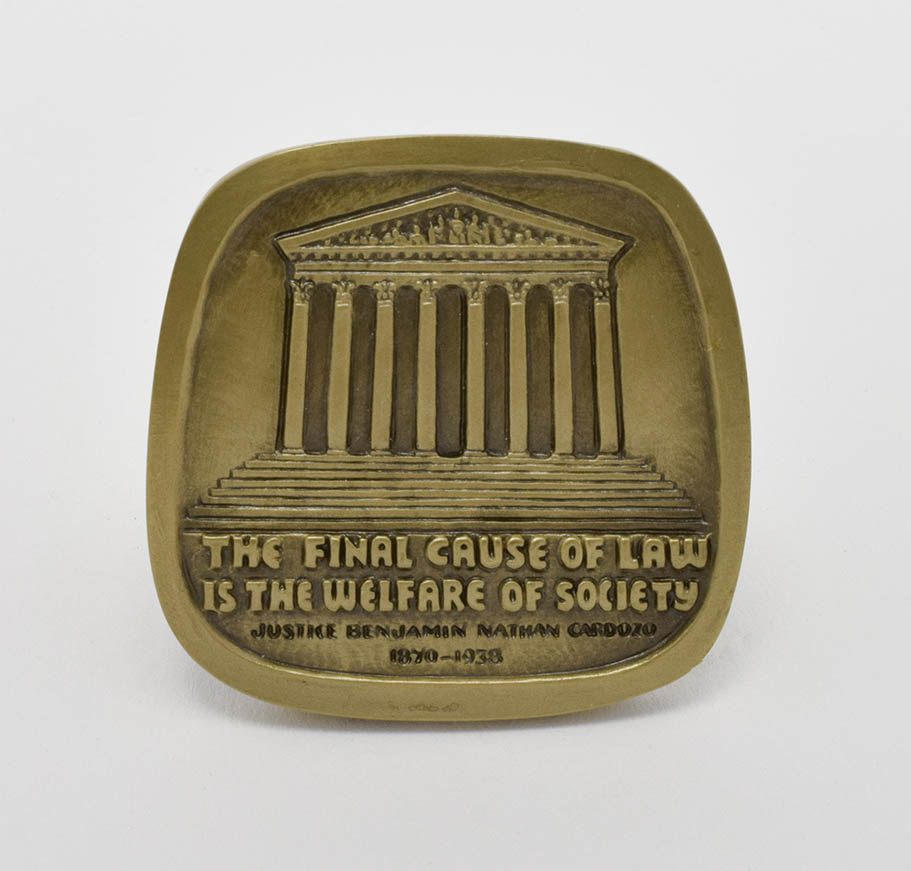Benjamin Cardozo (1870-1938)
Gerta Ries Wiener (Germany 1898-2000 New York)
USA, 1997
Bronze, h. 1 ¾ x w. 1 ¾ in.
Cincinnati Skirball Museum, Jewish-American Hall of Fame Collection, gift of Mel and Esther Wacks, Debra Wacks, and Shari Wacks, 2019.7.37
Benjamin Nathan Cardozo was born in New York City to a prominent Sephardic Jewish family. He attended Columbia University as an undergraduate and as a 15-year-old began his studies at Columbia Law School. By choosing to study law, he followed in the footsteps of his father, who had been a judge on the New York Supreme Court before resigning due to a corruption scandal. After passing the bar in 1891, Cardozo practiced in the field of commercial law. He was elected to the New York Supreme Court in 1913, but soon thereafter was chosen to serve on the New York Court of Appeals, eventually rising to the position of Chief Judge. In 1932, President Herbert Hoover appointed Cardozo to the United States Supreme Court, and he served on the Court until his death in 1938. Throughout his career, he defended Social Security and New Deal legislation and was part of the “Three Musketeers” with Justices Louis Brandeis and Harlan Fiske Stone, making up the liberal wing of the Supreme Court. He also contributed to the field of jurisprudence by writing The Nature of the Judicial Process (1921), The Growth of the Law (1924), and The Paradoxes of Legal Science (1928), and was one of the leaders of the American Law Institute. Cardozo was active in the congregation Shearith Israel in New York City and the American Jewish Committee. Columbia, Harvard, Princeton, and Yale are among the many schools that have given Cardozo honorary Legum Doctor (LL.D.) degrees.


